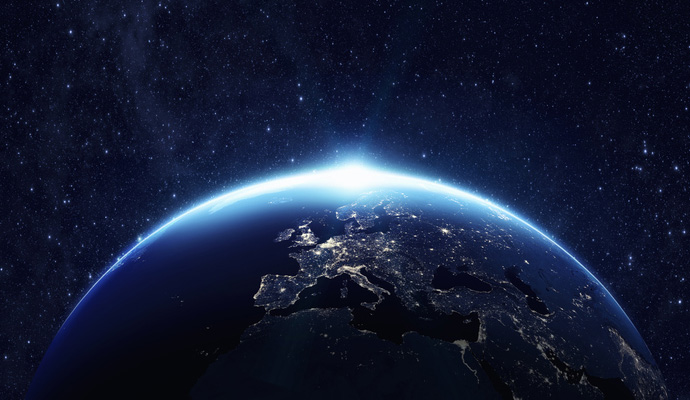

Image: © Nastco/iStock/Getty Images Plus
ECMWF Strategy to 2030
Today (26 January 2021) sees the launch of ECMWF’s Strategy 2021–2030, which will guide our activities over the next ten years. The emphasis is on providing ever more skilful forecasts to our Member and Co-operating States and users around the world.
The Strategy is updated every five years through a process of consultation and final approval by ECMWF’s Council of Member States.
Areas of focus include:
- Overcoming both computational and scientific challenges to achieve ensemble forecasts at three- to four-kilometre resolution
- Extracting maximum value from observations to produce an accurate analysis of the Earth system, consistent across its components
- Developing next-generation models to produce high-resolution digital twins of the Earth
- Increased use of Cloud technologies to enable efficient use of data
- Integrated global reanalyses and re-forecasts of weather and environmental hazards from 1950 onwards
- Estimation and monitoring of CO2 emissions
- Contribution to the optimisation of the global observing system
- Moving towards open data
Partnerships and collaborations with the European Meteorological Infrastructure (EMI), which includes key partners such as the Member States, EUMETSAT and EUMETNET, but also with the World Meteorological Organization, the European Union and the European Space Agency among others continue to be crucial to our success.
Machine learning roadmap
In terms of the computational challenges ahead, artificial intelligence will play an important role, and in particular machine learning, which will become part of the whole numerical weather prediction and climate services workflow.
The joint launch today of both papers illustrates how the latter will enable the former. The roadmap for machine learning activities at ECMWF provides a framework to help channel the many activities in machine learning for weather and climate predictions into a coordinated effort.
Machine learning refers to the development of computer algorithms that improve automatically by learning from data. It is particularly relevant to Earth system science and is progressing at an unprecedented rate, hand-in-hand with the growing volumes of data that are now available.
Lead author of the paper, Peter Dueben said:
"The ambition of the paper is to show how machine learning fits into, benefits or replaces existing developments to improve numerical weather prediction and climate services. With the help of this roadmap, we aim to collaborate with ECMWF Member and Co-operating States and the weather and climate modelling community in Europe to make the most of machine learning. Our vision is that by 2031 machine learning is fully integrated into numerical weather prediction and climate services and has improved predictions and the use of predictions in many areas of the workflow.”
ECMWF is already making use of machine learning in many parts of its work, including, for example, data assimilation. Here, observations and the forecast model are compared to derive the initial conditions for the next weather prediction. If differences between the model and the observations are diagnosed, machine learning tools can be used to learn to estimate model error for specific weather situations. This error representation can be used to analyse the behaviour of the error, or to correct for the error within data assimilation to improve initial conditions and therefore predictions.
In recent years, this science has also been integrated in the development of the Climate Change Service (C3S) and Atmosphere Monitoring Service (CAMS) components of the EU's Copernicus Earth Observation Services. A recent example of the added value brought about by machine learning in ECMWF processes is being offered by CAMS scientists and its contractors as they assess the impact of Covid-19 measures on European Air Quality, simulating what emissions would have been without lockdown measures.
ECMWF Director-General Florence Rabier said:
"With the publication of its Machine Learning Roadmap and the ambition so clearly demonstrated in our ten-year Strategy, ECMWF shows why it continues to be a key player when it comes to working with Earth observation data and models.
The unprecedented volumes of data from sensors and satellites processed by ECMWF and the accuracy of Earth system models contribute to the protection of life and property on this planet in the face of environmental and climate change. ECMWF's use of AI and machine learning will be a game-changer in continuing to make increasing amounts of data and information freely available for and, most importantly, usable by anyone well into the future."
Strategy and machine learning roadmap documents
- The full-length 'ECMWF Strategy 2021-2030' and a 'Roadmap to 2030' summarising the Strategy are available to download from the Strategy page.
- Machine learning at ECMWF: A roadmap for the next 10 years
